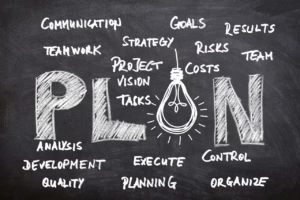Employee and Internal Team Experiences
Empowering Teams, Enhancing Productivity, Driving Engagement
Empowered Teams, Better Results
To succeed in today’s fast-paced business world, employees need the right tools and a supportive environment. As a digital consultant, I design and implement solutions that optimise workflows, enhance communication, and create engaging experiences for internal teams.
How I Support Employees and Internal Teams
1. Enhanced Productivity
Simplify processes and eliminate inefficiencies to empower employees to focus on what matters.
2. Seamless Collaboration
Foster teamwork with tools that break down silos and improve communication.
3. Personalised Support
Create a workplace culture where employees feel valued and supported.
4. Customer Experience Excellence
Tailor solutions to the unique needs of your internal teams, ensuring alignment with business goals.
How I Support Employees and Internal Teams
Enhanced Productivity
Simplify processes and eliminate inefficiencies to empower employees to focus on what matters.
Seamless Collaboration
Foster teamwork with tools that break down silos and improve communication.
Employee Engagement
Create a workplace culture where employees feel valued and supported.
Personalised Support
Tailor solutions to the unique needs of your internal teams, ensuring alignment with business goals.
Key Strategies
- Employee-Centric Culture
- Efficient Communication and Collaboration
- Personalised Employee Journeys
- Empowerment Through Technology
- Feedback and Improvement Loops
- Data-Driven Decision Making
Digital Capabilities
- Human Resources Management Systems (HRMS)
- Employee Experience Platforms (EXP)
- Productivity and Collaboration Tools
- Automation and AI
- Security and Compliance
- Mobile and Remote Work Enablement
How I Can Help

Consulting Services
Unlock your business potential with expert advice tailored to your goals. I provide strategic insights, practical recommendations, and hands-on guidance to help you grow, streamline, and make confident decisions.

Strategic Advisory
Shaping the future starts with a clear strategy. I work closely with you to develop long-term plans, align decisions with your vision, and guide successful execution in a fast-moving digital world.

Integrated Solutions
Connecting technology, people, and processes — I design and implement integrated systems that are robust, scalable, and aligned with your business goals. The result? Seamless operations and improved performance across the board.
Challenges I Solve

Business Foundations
Strong foundations are essential. I help you build resilience across leadership, governance, finance, and core operations — creating a platform for long-term growth.

Revenue & Growth
I work with you to unlock growth by refining your sales, marketing, and innovation strategies. Whether you’re scaling or stabilising, I help you build a future-ready business with measurable results.

Customer Experience
Delight customers and earn their loyalty. I help you design end-to-end experiences using data, technology, and design thinking — ensuring every interaction adds value and deepens engagement.

Operational Efficiency
Improve performance where it matters most. I identify inefficiencies and help you implement systems that cut waste, increase productivity, and maximise resource value.

Digital Transformation
Ready to embrace change? I guide you through adopting new technologies, modernising legacy systems, and building business agility — so you stay competitive in a digital-first world.

Innovation & Development
Bring new ideas to life. I help you explore emerging technologies, prototype products, and build market-ready solutions that give you a strategic edge.
Digital Capabilities
Collaboration Tools
- Platforms: Tools like Microsoft Teams, Slack, and Google Workspace facilitate seamless communication and collaboration among employees, regardless of location.
- Features: Real-time messaging, video conferencing, file sharing, and collaborative document editing.
Data Analytics and Insights
- Tools: Use of business intelligence (BI) tools like Tableau, Power BI, and Google Analytics to gather and analyse data.
- Capabilities: Data-driven decision-making, performance tracking, and identifying areas for improvement.
Automation and Workflow Management
- Software: Implement automation tools like Zapier, Microsoft Power Automate, and Robotic Process Automation (RPA) to streamline repetitive tasks.
- Benefits: Increased efficiency, reduced errors, and allowing employees to focus on more strategic tasks.
Employee Experience Platforms (EXP)
- Examples: Platforms like Qualtrics, Glint, and Culture Amp that gather employee feedback and provide insights into employee satisfaction and engagement.
- Functions: Surveys, pulse checks, and analytics to measure and improve employee experience.
Learning and Development Systems
- LMS Platforms: Systems like Coursera, LinkedIn Learning, and Moodle that offer training and upskilling opportunities.
- Features: Access to online courses, skill development programs, and tracking of learning progress.
HR Management Systems (HRMS)
- Software: Tools like Workday, SAP SuccessFactors, and BambooHR that manage various HR functions.
- Capabilities: Recruitment, onboarding, payroll, performance management, and employee records management.
Cybersecurity and Data Protection
- Tools: Security solutions like firewalls, antivirus software, and multi-factor authentication (MFA).
- Importance: Protecting sensitive employee and business data, ensuring compliance with regulations.
Mobile Accessibility
- Applications: Mobile-friendly versions of internal systems and platforms, enabling employees to access tools and information on the go.
- Benefits: Increased flexibility and convenience for remote or mobile workforce.
Digital Communication Channels
- Tools: Email platforms, intranet systems, and social media integration.
- Purpose: Facilitating internal communication, company-wide announcements, and information sharing.
Project Management Software
- Platforms: Tools like Asana, Trello, and Jira that help manage projects and tasks.
- Features: Task assignments, timelines, progress tracking, and collaboration on projects.
Business Benefits
Increased Productivity
Optimising the employee experience leads to higher levels of engagement, which directly correlates with increased productivity. Engaged employees are more motivated, put in extra effort, and are more committed to their work, resulting in better performance and higher output.
Improved Retention
A positive internal experience reduces turnover rates. Employees who feel valued, supported, and satisfied with their work environment are less likely to leave the organisation, saving costs related to recruiting, hiring, and training new staff.
Fostering Innovation
When employees feel safe and encouraged to share their ideas, it fosters a culture of innovation. This leads to creative problem-solving and the development of new products, services, and processes that can give the business a competitive edge.
Better Customer Service
Happy and engaged employees are more likely to deliver exceptional customer service. This positive interaction can enhance customer satisfaction, leading to increased loyalty, positive reviews, and repeat business.
Reduced Health Costs
A supportive work environment that prioritises employee well-being can lead to reduced absenteeism and lower health-related costs. Health and wellness programmes, ergonomic workspaces, and a focus on work-life balance contribute to healthier, more present employees.
Higher Profitability
All these benefits collectively contribute to improved financial performance. Higher productivity, reduced turnover, better customer satisfaction, and innovative solutions drive revenue growth and profitability.
Goals, outcomes, and financial impact
- Objectives and Key Results (OKRs)
- Key Performance Indicators (KPIs)
- Profit & Loss (P&L)
Improve Employee Engagement and Satisfaction
- KR1: Achieve an employee engagement score of 85% in annual surveys.
- KR2: Increase employee Net Promoter Score (eNPS) to +50.
- KR3: Implement quarterly pulse surveys with a 70% response rate.
Enhance Productivity and Efficiency
- KR1: Automate 50% of repetitive tasks by Q4.
- KR2: Reduce project completion times by 20%.
- KR3: Achieve a 90% adoption rate for new collaboration tools.
Foster a Culture of Innovation
- KR1: Launch an internal innovation program with 100 participants.
- KR2: Implement 10 employee-generated ideas by the end of the year.
- KR3: Increase cross-departmental project collaborations by 30%.
Invest in Employee Development
- KR1: Offer 100% of employees access to a personalised development plan.
- KR2: Achieve a 90% completion rate for mandatory training programs.
- KR3: Increase the number of employees participating in leadership development programs by 25%.
Employee Engagement and Satisfaction
Measures overall employee engagement through regular surveys, indicating how connected employees feel to their work and the organisation.
Gauges the likelihood of employees recommending the organisation as a great place to work.
Percentage of employees who express satisfaction with their roles and responsibilities.
The rate at which employees leave the organisation, with lower rates indicating higher satisfaction and engagement.
Tracks the frequency of employee absences, with lower rates suggesting higher engagement and well-being.
Productivity and Efficiency
Percentage of repetitive tasks that have been automated, reducing manual workload.
Measures the average time taken to complete projects, with shorter times indicating higher efficiency.
Percentage of employees actively using new digital tools and platforms.
Tracks the average output (e.g., sales, products, services) per employee, reflecting productivity improvements.
Measures the efficiency of internal processes and workflows.
Innovation and Collaboration
Tracks the number of employee-generated ideas that are successfully implemented.
Measures the frequency and success of collaborative projects across different departments.
Percentage of employees involved in innovation initiatives and programs.
Measures the time taken to develop and launch new products or services.
Employee Development
Percentage of employees who complete mandatory and optional training programs.
Number of employees with personalised development plans and their progress.
Percentage of employees participating in leadership development programs.
Tracks improvements in key skills as measured through assessments and performance reviews.
Measures the rate at which employees are promoted from within, reflecting the effectiveness of development programs.
Wellness and Well-being
Percentage of employees engaging in wellness programs and activities.
Tracks costs associated with employee health issues, with reductions indicating better well-being.
Measures employee satisfaction with their work-life balance, often gathered through surveys.
Technology Utilisation
Measures the availability and reliability of digital tools and systems.
Employee satisfaction with the digital tools and platforms provided by the organisation.
Average time taken to resolve technical issues, reflecting the efficiency of IT support.
Customer Impact
Indirectly measures the impact of employee experience on customer satisfaction and service quality.
Reflects the impact of improved internal capabilities on customer loyalty and retention.
Measures customer willingness to recommend the company's products or services, influenced by employee performance and service quality.
Revenue Impact
- Increased Productivity: Higher output and efficiency can lead to increased revenue.
- Innovation: Development of new products/services can open new revenue streams.
- Customer Satisfaction: Enhanced employee experience leads to better customer service, impacting sales positively.
Cost Savings
- Reduced Turnover: Lower recruitment and training costs due to higher retention.
- Efficiency Gains: Cost savings from automated processes and reduced project times.
- Health and Wellness: Reduced absenteeism and health-related costs due to a supportive work environment.
Investment Costs
- Technology Implementation: Initial and ongoing costs for new tools and platforms.
- Training and Development: Costs associated with employee training programs and development initiatives.
- Change Management: Investment in change management resources to facilitate smooth transitions.
Operational Costs
- Maintenance and Support: Ongoing expenses for maintaining and supporting digital tools.
- Facility Upgrades: Costs related to enhancing workplace infrastructure and ergonomics.
Tools and Strategies for Success
With data-driven insights and tailored approaches, I help organisations:
- Streamline workflows.
- Introduce collaborative platforms.
- Build employee-centric environments that boost engagement and satisfaction.
Let’s Elevate Your Teams
Are your employees equipped for success? Let’s collaborate to create a workplace where your teams can excel.
